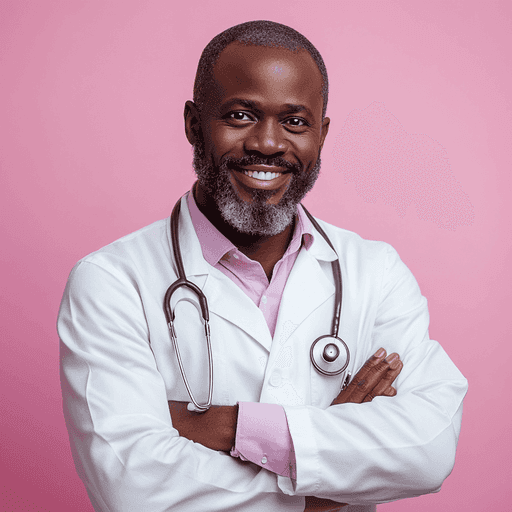How Long After STD Treatment Can You Have Sex Again? A Doctor’s Timeline
Feb 3, 2025
Most people can safely resume sexual activity 7 days after completing STD treatment, but the exact timeline varies by infection type. Always wait for your doctor's confirmation and ensure both partners complete treatment before having sex again.
When dealing with a sexually transmitted disease (STD), one of the most common questions patients ask is: "When can I have sex again?" The answer depends on several factors including the type of infection, treatment method, and your body's response to therapy.
Understanding STD Treatment Recovery Times
The waiting period after STD treatment serves a crucial purpose: ensuring you're no longer contagious and preventing reinfection. During treatment, your body needs time to eliminate the infection completely, and premature sexual activity can compromise recovery or spread the disease to partners.
Why Timing Matters After STD Treatment
Your immune system requires adequate time to respond to treatment and clear the infection from your system. Rushing back to sexual activity can:
Increase risk of treatment failure
Lead to antibiotic resistance in bacterial infections
Cause reinfection from untreated partners
Result in more severe complications
Specific Recovery Timelines by STD Type
Bacterial STDs: Chlamydia and Gonorrhea
Recovery Timeline: 7-10 days after completing antibiotics
Chlamydia and gonorrhea are the most common bacterial STDs, affecting millions annually. These infections respond well to antibiotic treatment when properly managed.
Treatment Protocol:
Single-dose azithromycin or 7-day doxycycline course
Complete antibiotic course even if symptoms improve
Avoid alcohol during treatment to maximize effectiveness
When You Can Resume Sex:
Wait minimum 7 days after finishing all antibiotics
Ensure partner completes treatment simultaneously
Consider retesting 3-4 weeks post-treatment for confirmation
Viral STDs: Herpes (HSV-1 and HSV-2)
Recovery Timeline: Until all lesions heal completely (typically 7-14 days)
Herpes requires a different approach since it's a lifelong viral infection that can be managed but not cured.
Treatment Considerations:
Antiviral medications reduce outbreak duration
First outbreaks typically last longer than recurrent episodes
Suppressive therapy may be recommended for frequent outbreaks
Safe Sex Guidelines:
Wait until all visible sores completely heal
Skin should return to normal appearance
No pain, itching, or tingling in affected areas
Discuss ongoing transmission risks with partners
Syphilis Treatment Recovery
Recovery Timeline: 2-4 weeks after antibiotic injection
Syphilis treatment varies significantly based on the infection stage when diagnosed.
Primary/Secondary Syphilis:
Single penicillin injection typically sufficient
Wait until all sores or rashes completely disappear
Follow-up blood tests at 6 and 12 months
Late-Stage Syphilis:
Multiple antibiotic treatments required
Longer recovery period (up to several months)
Regular monitoring for treatment effectiveness
Essential Factors Affecting Your Recovery Timeline
Your Immune System Status
Several factors influence how quickly your body responds to STD treatment:
Factors That May Extend Recovery:
Compromised immune system (HIV, diabetes, chronic illness)
Concurrent infections
Poor nutrition or high stress levels
Smoking or excessive alcohol consumption
Optimizing Recovery:
Maintain healthy diet rich in vitamins and minerals
Get adequate sleep (7-9 hours nightly)
Stay hydrated and exercise moderately
Avoid substances that weaken immunity
Partner Treatment Coordination
Critical Success Factor: Simultaneous Treatment
Even perfect personal treatment can fail if your partner remains infected. This creates a "ping-pong" effect where you reinfect each other repeatedly.
Partner Treatment Checklist:
Both partners start treatment simultaneously
Complete entire prescribed course
Avoid sexual contact during treatment period
Both partners get retested if recommended
Treatment Compliance and Follow-up
Medication Adherence:
Take all prescribed medications exactly as directed
Don't stop early even if symptoms disappear
Set reminders for multi-dose treatments
Report adverse reactions to healthcare provider immediately
Follow-up Appointments:
Attend all scheduled check-ups
Complete recommended retesting
Discuss any ongoing symptoms or concerns
Get clearance before resuming sexual activity
Red Flags: When to Contact Your Doctor
Some situations require immediate medical attention during STD treatment:
Urgent Symptoms:
Severe allergic reactions to medications
Worsening symptoms despite treatment
New or unusual symptoms developing
Persistent pain or discharge after treatment completion
Treatment Concerns:
Missed multiple medication doses
Inability to complete prescribed course
Partner refuses treatment or testing
Symptoms return after initial improvement
Safe Sex Strategies After Treatment
Immediate Post-Treatment Period
First Month After Treatment:
Use barrier protection (condoms) consistently
Monitor for any returning symptoms
Complete any recommended follow-up testing
Communicate openly with sexual partners
Long-term Sexual Health
Ongoing Prevention Strategies:
Regular STD screening (every 3-6 months for high-risk individuals)
Open communication about sexual health with partners
Consistent condom use with new or untested partners
Consider pre-exposure prophylaxis (PrEP) if appropriate
Frequently Asked Questions
Q: Can I have sex sooner if I feel completely better? A: No. Feeling better doesn't mean you're no longer contagious. Always complete the full waiting period recommended by your healthcare provider.
Q: What if my partner hasn't started treatment yet? A: Wait until both partners complete treatment before resuming sexual activity. Having sex with an untreated partner will likely cause reinfection.
Q: Do I need retesting after treatment? A: Many STDs require follow-up testing to confirm successful treatment. Your doctor will advise based on your specific infection and risk factors.
Q: Can oral sex resume earlier than penetrative sex? A: No. STDs can transmit through oral contact, so the same waiting periods apply to all forms of sexual activity.
Q: What about using condoms during the waiting period? A: While condoms reduce transmission risk, they don't eliminate it completely. It's safest to avoid all sexual contact during the recommended waiting period.
Key Takeaways for Safe Recovery
The most important factor in successful STD treatment is patience. Rushing back to sexual activity can undermine weeks of treatment and put both you and your partners at risk.
Remember These Essential Points:
Complete your full treatment course regardless of symptom improvement
Wait the recommended time period before resuming sex
Ensure your partner receives simultaneous treatment
Get medical clearance before returning to sexual activity
Use protection and maintain regular screening for ongoing health
Successfully treating an STD is just the first step in maintaining your sexual health. Following proper recovery protocols protects not only your own health but also prevents spreading infections within your community.

Dr. Michael Thompson
Dr. Michael Thompson is an expert in sexually transmitted diseases with extensive clinical and research experience. He leads campaigns advocating for early diagnosis and prevention of diseases like HIV and gonorrhea. He collaborates with local organizations to educate both youth and adults about sexual health.





